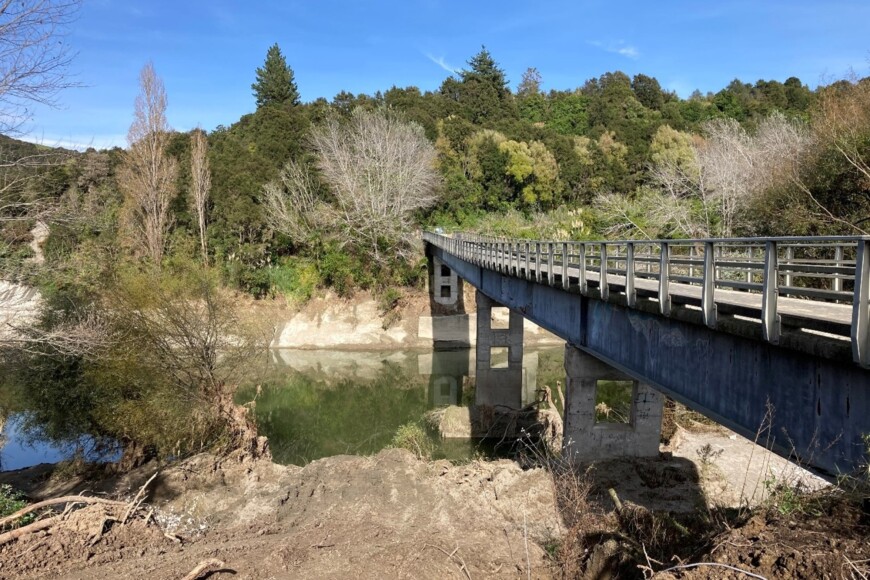
Wairoa River
As part of Our Land and Water’s Whitiwhiti Ora programme, Manaaki Whenua partnered with the Wairoa Tripartite (Tātau Tātau o te Wairoa, Hawke’s Bay Regional Council, Wairoa District Council) to gain a better understanding of the relationship between sediment and cultural values in and around Te Wairoa Hōpūpū Hōnengenenge Matangirau – the Wairoa River.
The river and tributaries are significant to the iwi and hapū of Te Rohe o Te Wairoa and are valued ecologically and for recreation and mahinga kai (food gathering/cultivation).
The project team (Dr Melissa Robson-Williams, Dr Nikki Harcourt and Laise Harris) worked with scientists who deliver sediment modelling (Dr Hugh Smith, Dr Simon Vale, and Dr Andrew Neverman), ecological knowledge (colleagues from NIWA), and with local Māori researchers – who adapted a kaupapa Māori-based conceptual framework for assessing the health of cultural values, using it to collect a baseline of cultural health. How does sediment affect cultural values in and around the river? “In the project, insights from mātauranga Māori and Western science were brought together to understand how this sediment affects cultural values in and around the river, while looking at what can be done to improve the situation,” says project lead Melissa.
The team found that sediment in and around the river impacts on cultural values in three ways:
- Directly, with a number of indicators in the cultural values framework that specifically reference aspects of ecological health like water clarity.
- Sediment and erosion in and around the river affect mahinga kai species (e.g. through smothering of spawning habitats of inanga/ whitebait).
- Sediment in and around the water affects cultural practices, including dimensions such as loss of traditional knowledge of harvest methods, loss of site access, and ability to enact core values (e.g. Whanaungatanga, Manaakitanga and Kaitiakitanga are all compromised by excessive sediments).
These impacts are going to get worse with climate change, the team says.
The project modelled current sediment losses and losses under several climate change scenarios. This modelling showed that under the best-case scenarios, sediment losses are predicted to increase by up to 10% by mid-end of the century and under the worst-case scenario, erosion is predicted to increase by 37% by mid- century and 69% by end of century.
“When thinking about what could be done to improve the situation, we modelled different land uses and practices which showed a big improvement, but we also found that the connection between mana whenua and the river is not contingent solely upon the physical state of the environment.
“This was one of the most important insights that we got from the entire project,” says Melissa. Sediment reduction, despite being the main contaminant in the river, is not the only way to improve cultural values in the Wairoa catchment, she says.
“Values relating to connection to and relationship with the environment, knowledge of cultural practices and intergenerational knowledge transfer about these practices, and the ability to practice the cultural ethics of Manaakitanga, Kaitiakitanga and Whānaungatanga can all be strengthened, as well as by reduction of erosion and sediment loads.
“This opens a lot of opportunities for improvements,“ she adds.
Key contact
